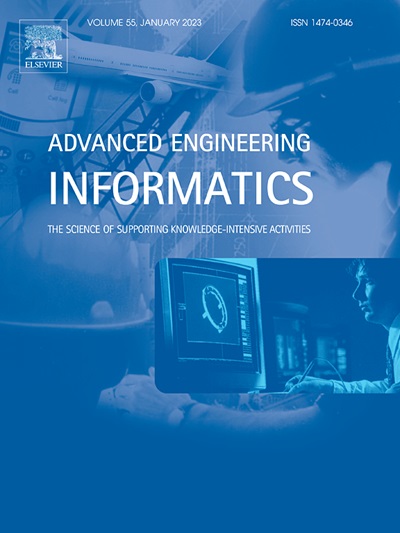FD-LLM:用于复杂设备故障诊断的大型语言模型
IF 9.9
1区 工程技术
Q1 COMPUTER SCIENCE, ARTIFICIAL INTELLIGENCE
引用次数: 0
摘要
在复杂设备故障诊断中,传统的基于深度学习的故障诊断方法通常需要“一种场景一种模型”的特殊设计和训练,不同故障类别的特征重叠严重,容易出现误诊。多模态大语言模型(MM-LLM)具有较强的多模态理解能力和逻辑推理能力。本文尝试将MM-LLM用于复杂设备的故障诊断,以获得更高的诊断准确率。然而,现有的mm - llm缺乏针对工程时间序列数据的特定领域知识和模态对齐训练,限制了其在工业故障诊断任务中的有效性。针对上述问题,本文提出了一种新的基于MM-LLM的故障诊断方法。首先,通过对特征空间中工程数据和设备运行状态的描述文本进行模态对齐训练,激活LLM理解时间序列数据模态的能力。其次,针对特征空间中存在模式混叠的工程数据难以识别的问题,提出了一种模糊语义嵌入方法。此外,通过可学习的提示嵌入,将补充的故障诊断背景知识引入到MM-LLM中。最后,利用LORA方法对LLM进行了微调。实验结果表明,该方法能达到较高的故障分类精度。本文章由计算机程序翻译,如有差异,请以英文原文为准。
FD-LLM: Large language model for fault diagnosis of complex equipment
In complex equipment fault diagnosis, traditional deep learning-based fault diagnosis methods usually require special design and training of “one model for one scenario,” the features of different fault categories overlap seriously, making misdiagnosis easy to occur. The Multimodal Large Language Model (MM-LLM) demonstrates strong multimodal understanding and logical reasoning abilities. This article attempts to use MM-LLM for complex equipment fault diagnosis to yield higher diagnostic accuracy. However, existing MM-LLMs lack domain-specific knowledge and modal alignment training for engineering time-series data, limiting their effectiveness in industrial fault diagnosis tasks. This article proposes a new fault diagnosis method based on MM-LLM in response to the above issues. First, by conducting modal alignment training on the description text of engineering data and equipment operation status in the feature space, the ability of the LLM to understand time-series data modalities is activated. Second, a fuzzy semantic embedding method is proposed to address the difficulty of identifying engineering data with pattern aliasing in the feature space. In addition, supplementary fault diagnosis background knowledge is introduced into MM-LLM by a learnable prompt embedding. Finally, the LORA method is used to fine-tune the LLM. Experimental results show that the proposed method can achieve higher fault classification accuracy.
求助全文
通过发布文献求助,成功后即可免费获取论文全文。
去求助
来源期刊

Advanced Engineering Informatics
工程技术-工程:综合
CiteScore
12.40
自引率
18.20%
发文量
292
审稿时长
45 days
期刊介绍:
Advanced Engineering Informatics is an international Journal that solicits research papers with an emphasis on 'knowledge' and 'engineering applications'. The Journal seeks original papers that report progress in applying methods of engineering informatics. These papers should have engineering relevance and help provide a scientific base for more reliable, spontaneous, and creative engineering decision-making. Additionally, papers should demonstrate the science of supporting knowledge-intensive engineering tasks and validate the generality, power, and scalability of new methods through rigorous evaluation, preferably both qualitatively and quantitatively. Abstracting and indexing for Advanced Engineering Informatics include Science Citation Index Expanded, Scopus and INSPEC.
 求助内容:
求助内容: 应助结果提醒方式:
应助结果提醒方式:


